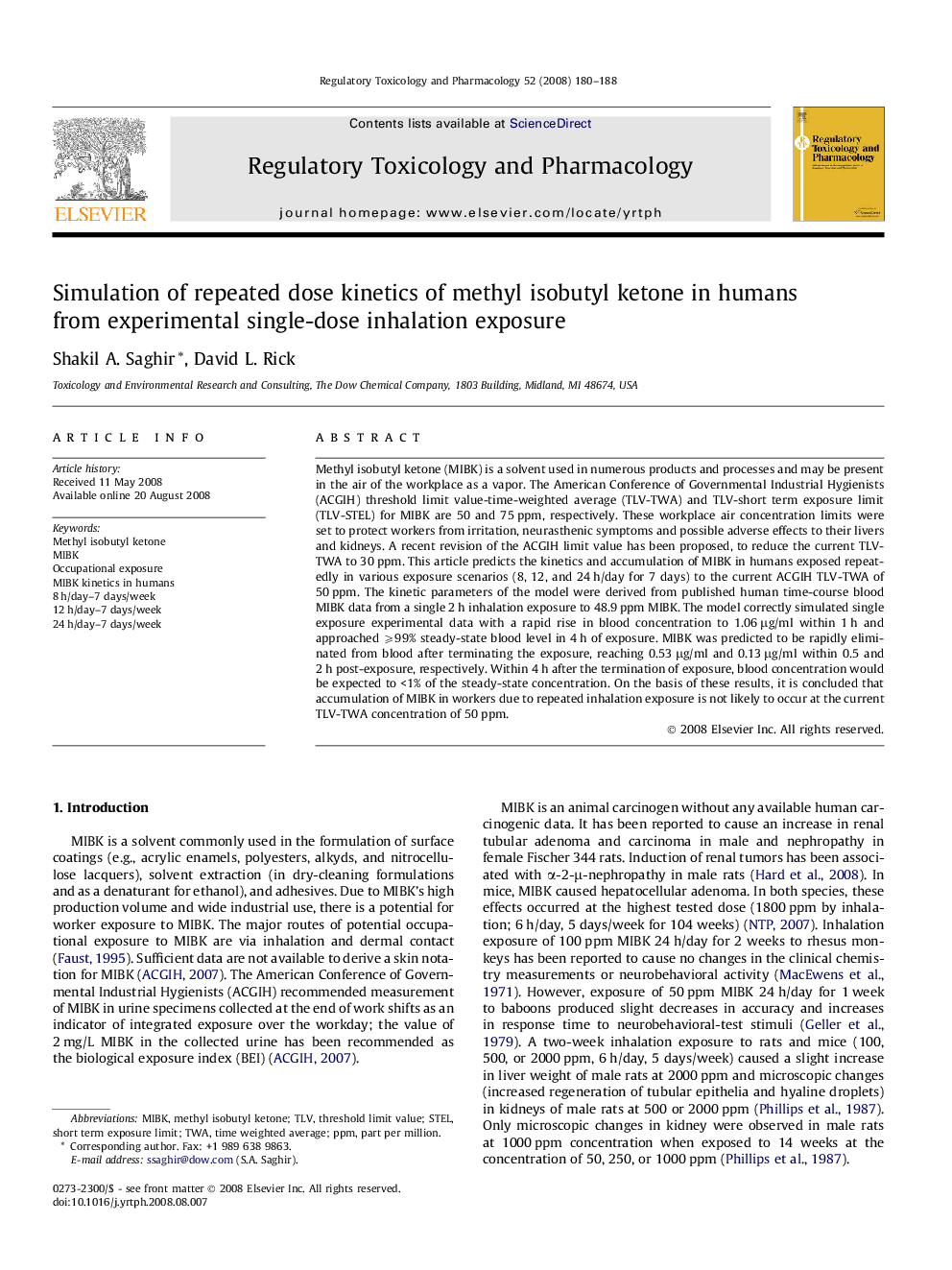| Article ID | Journal | Published Year | Pages | File Type |
|---|---|---|---|---|
| 2592643 | Regulatory Toxicology and Pharmacology | 2008 | 9 Pages |
Abstract
Methyl isobutyl ketone (MIBK) is a solvent used in numerous products and processes and may be present in the air of the workplace as a vapor. The American Conference of Governmental Industrial Hygienists (ACGIH) threshold limit value-time-weighted average (TLV-TWA) and TLV-short term exposure limit (TLV-STEL) for MIBK are 50 and 75 ppm, respectively. These workplace air concentration limits were set to protect workers from irritation, neurasthenic symptoms and possible adverse effects to their livers and kidneys. A recent revision of the ACGIH limit value has been proposed, to reduce the current TLV-TWA to 30 ppm. This article predicts the kinetics and accumulation of MIBK in humans exposed repeatedly in various exposure scenarios (8, 12, and 24 h/day for 7 days) to the current ACGIH TLV-TWA of 50 ppm. The kinetic parameters of the model were derived from published human time-course blood MIBK data from a single 2 h inhalation exposure to 48.9 ppm MIBK. The model correctly simulated single exposure experimental data with a rapid rise in blood concentration to 1.06 μg/ml within 1 h and approached ⩾99% steady-state blood level in 4 h of exposure. MIBK was predicted to be rapidly eliminated from blood after terminating the exposure, reaching 0.53 μg/ml and 0.13 μg/ml within 0.5 and 2 h post-exposure, respectively. Within 4 h after the termination of exposure, blood concentration would be expected to <1% of the steady-state concentration. On the basis of these results, it is concluded that accumulation of MIBK in workers due to repeated inhalation exposure is not likely to occur at the current TLV-TWA concentration of 50 ppm.
Keywords
Related Topics
Life Sciences
Environmental Science
Health, Toxicology and Mutagenesis
Authors
Shakil A. Saghir, David L. Rick,
